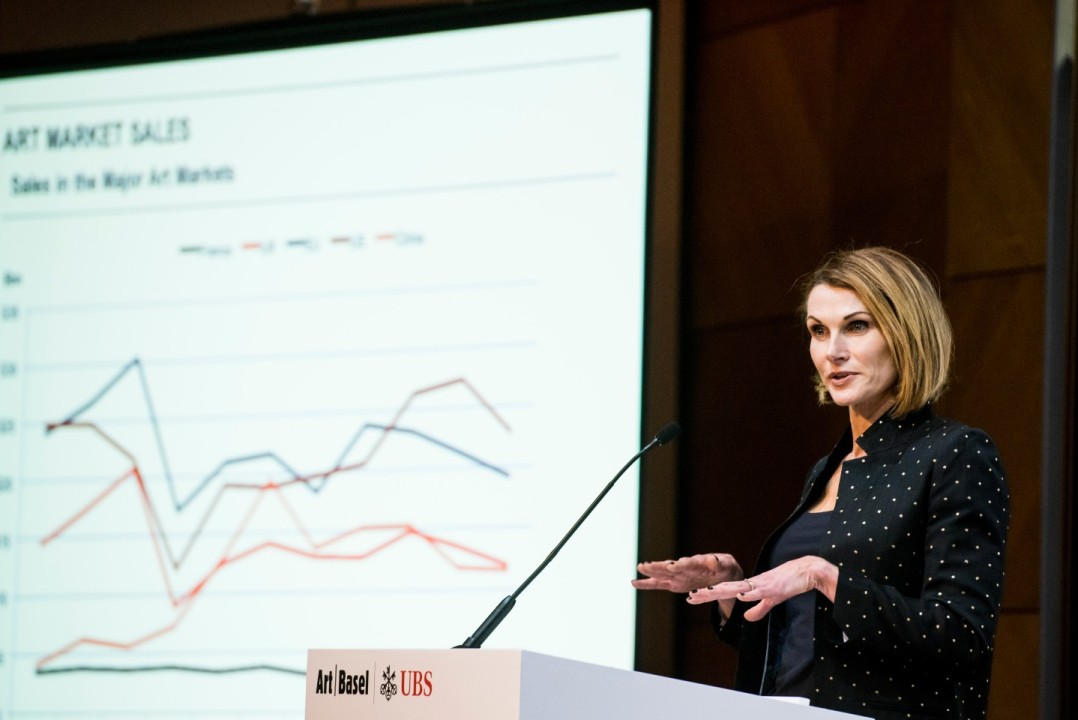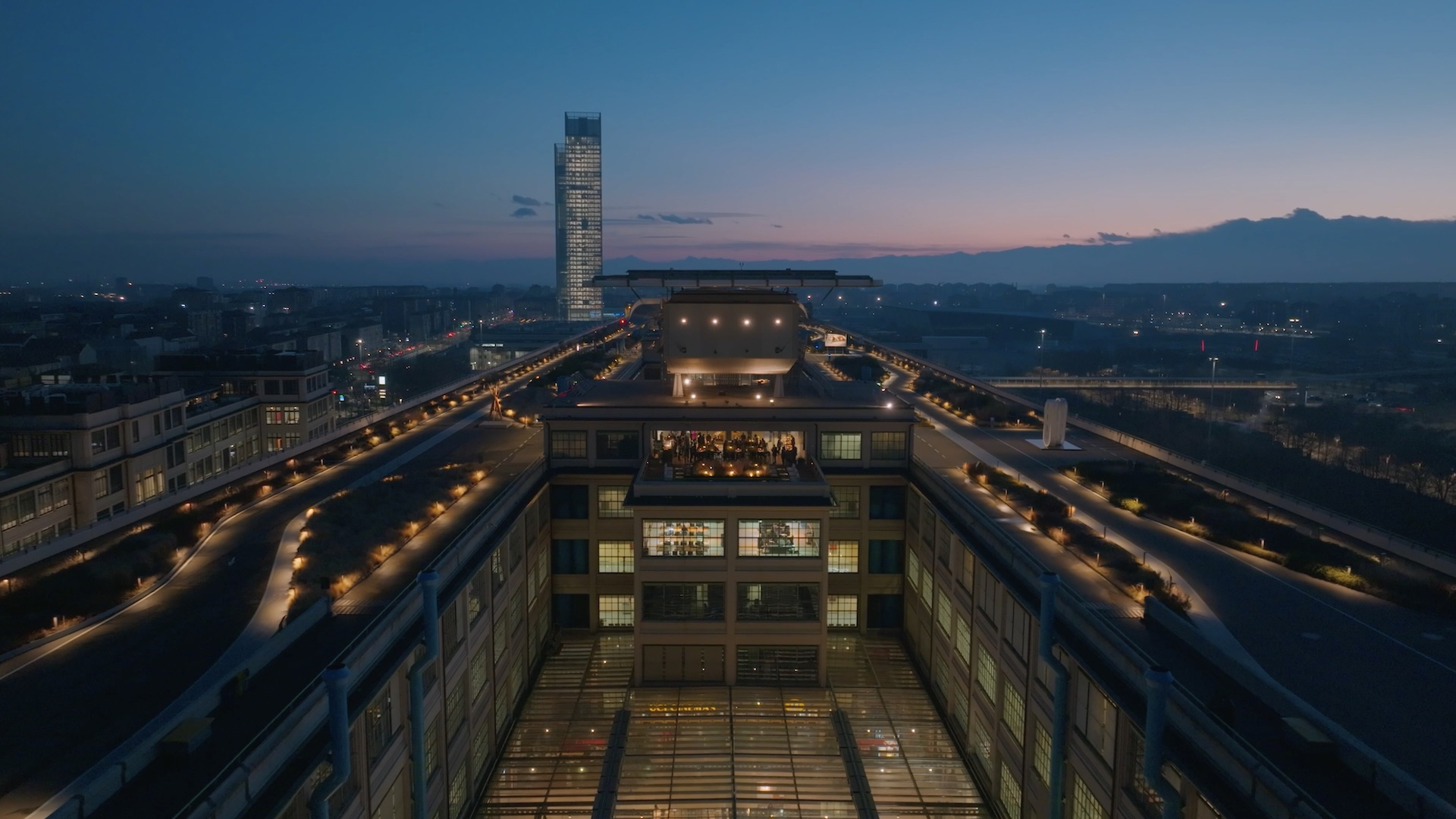
The party before the end
Art Market 2024, a story of us all: when the orchestra doesn't stop playing while the Titanic sinks. Are there any solutions?
To say that the art market in 2024 is in crisis is like saying there was a leaky faucet on the Titanic. And believe me, there is no better time of the year to try to take stock of art and the market.The busy six months of auctions and fairs have come to an end, the gallery owners are already at sea (the rich ones) and all that remains is to draw up the balance sheets to see how 2024 will end.
Spoiler: not well.
 Arts Economics Art Market Report, by Art Basel & UBS
Arts Economics Art Market Report, by Art Basel & UBS
The main reports on the art market have been published and, even though they refer to 2023, they are a fairly accurate predictor of the near future we have lived and will live.The global economy is in trouble, the art market does not say so, we see it by monitoring the fine international luxury brands that are down, at best, 20%.
Art faithfully follows, albeit with some delay, the traditional economy. We know the reasons: rising inflation, rising interest rates, international political instability. So, the omelette is served. Therfore, we see declining turnovers for auction houses everywhere, from New York to Hong Kong, right down to the most sinister figures, those of the galleries that no longer even pay for their stands at the fairs, or those of the artists, the last link in the production chain (even though it should be the first and germinal one) who once again find themselves having to deal with the bank.
OK, but how can you say that this is actually the case?
I mostly read the Art Basel and UBS report, written by Clare Mc Andrew of Arts Economics. I met her many years ago in Maastricht, she is a decisive Irish woman, almost as tall as me (I am 1.94), the kind with a handshake that leaves no room for interpretation. As her report. I have never found someone so well prepared and with such a precise team to do the job of 'art accountant'. In simple terms, she takes all available public data (auctions, all over the globe), and then does a dense statistical sampling with fairs and galleries. She puts it all in the pot and finally drains the pasta. It may not be precise in detail, but it is the closest possible approximation to the real situation.
 Arts Economics Art Market Report, by Art Basel & UBS
Arts Economics Art Market Report, by Art Basel & UBS
A few numbers from her report: "after two years of growth, art market sales fell by 4% in 2023 compared to the previous year, to an estimated value of USD 65 billion. It is mainly the top end of the market that is suffering, both galleries and auction houses. The latter are the ones who recorded a greater drop, by 7%, than gallery owners, who recorded a drop of 3%. Although down year-on-year, values still remained above the pre-pandemic (2019) level, totalling $64.4 billion, despite the fact that the maximum price paid at public auction this year was down 16% year-on-year.
Not all is lost. Clare writes: "After two years of growth, sales in the art market have declined, partly due to a slowdown in sales at the high end of the market. We have remained above pre-pandemic levels, thanks in part to continued growth in online sales, which account for 18% of sales, almost double pre-pandemic levels. Digital innovations to view and buy artworks through web-based and mobile devices, as well as the involvement of galleries, auction houses, dealers and collectors, are on the rise. The Chinese market caught up with the general trend and ousted the UK as the second largest market. Activity picked up as post-lockdown buyers recovered from the auction backlog and as Hong Kong's major fairs and exhibitions returned to full-scale programming. Resilience remains the dominant sentiment. The strength of financial markets, the expected fall in interest rates and weakening inflation offer hope. Significant numbers of new and ambitious young collectors entering the market offer hope especially in China, forming a business pipeline for dealers and gallerists".
 Courtesy Christie's
Courtesy Christie's
You understand that, everything written in the more than 250 pages of the report is now distant past. China has stalled again and the US is in the throes of a new election cycle. True, China became the second largest global art market in 2023, with a share of 19% to date and a total of $12.2 billion. However, the relative rise to second place may have been the result of a unique and irreplicable set of factors related to the reopening after the severe and prolonged pandemic closures, which resulted in a build-up of material on the market for three years. And then I invite you to go and do business in China, not exactly a walk in the park. Europe is the Cinderella of the art world. UK and the market no longer go hand in hand post Brexit, while Paris is set to become the new hub of the local market (it will also host the new Art Basel Paris in October, which has taken the place of Paris+). Italy represents 1% of the entire global market, better than nothing.
So how does it work when the captain of the Titanic orders the sailors to lower the lifeboats?
Clare writes: "The slowdown in the market has, in most cases, resulted in a centralisation of quality, with more frenetic speculative buying and a greater focus on value and quality by collectors. This has led to a concentration of sales around top artists: several galleries reported that one third of their sales in 2023 came from the single highest selling artist. This has generated a tendency to "play it safe" on the part of collectors and, consequently, also on the part of gallery owners, as evidenced by the general flattening of programmes and the predominance of painting in the major art centres and recent fairs".
 Art Basel 2024, courtesy Art Basel
Art Basel 2024, courtesy Art Basel
In a nutshell, this is what happens: the big galleries, like the big auction houses, have to play it safe, offering only the first fruits that are unanimously recognised as current currency. The rest, waits in stock.
Here at Spaghetti Boost we have asked ourselves many times in our editorial calls whether there are profitable solutions for all those outside the blue chips market.
So I throw you a provocation: think of Maison Du Monde and IKEA. They offer editions of works of art at prices ranging from 50 to 800 euros. And they sell them, otherwise they would be out of stock. Try to think now about the prices of young artists offered by our own galleries, those with coefficients. We are quietly between 1,500 and 6,000 euros on average.
These figures are clearly no longer compatible with the middle class of the population, who reasonably furnish their homes at IKEA. I am not saying that all artists have to lower their prices in order to work, but that perhaps a lower price list and stronger strategies, which for example do not exclude partnerships with brands, could still be better than nothing.
Or not?
I look forward to seeing you in the comments on Instagram.
Cover image: Clare Mc Andrew, Arts Economics.
Giacomo Nicolella Maschietti is a professional journalist specialising in art and the market. He writes for various trade publications and has been hosting "Top Lot" on ClassCNBC (SKY 507) since 2008. On Spaghetti Boost he will report on the art system from an unorthodox perspective, hosting exhibitions and artists who bear witness to the contemporary world.



